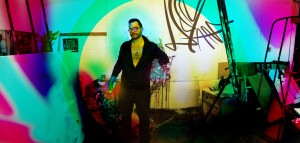While this project was meant to promote discussions of race, ethnicity, and culture, some students did not ultimately perform their identities through this specific lens. These performances included identities positioned within and against religion, the counter culture of hipsters, and what it means to be a Philadelphian attending a university in Pittsburgh. I know for a few of these students, they experienced the same disconnect described above with the idea of culture and felt they had no claim to a specific ethnic/cultural group. While they did not address this lens specifically, though, they all (with the exception of one) explored moments of “jam” as members of other cultural groups. The two participants to be discussed both investigated what it meant to live in contrast to dominant forms of culture.
Carol was one student who was adamant about her lack of culture. I struggled to get her to identify any traits that make her “different.” In her narrative responses, she shares,

I have never really thought of myself as having a strong cultural identity. I am a white female from rural Pennsylvania. I have never lived in a big city. My parents always told me I was ½ German, ½ Irish. This never really meant anything to me because we didn’t have any culturally specific foods, music, dances, or traditions. I’m not sure how my culture or ethnicity impacts my daily life because I don’t know how my life would be if I was of another culture or ethnicity. I assume that life is easier in America for a straight white woman than it is for women of minorities or in other countries. It isn’t often, if ever, that I am confronted with negative stereotypes about my race. (personal communication, December 3, 2012)
*Read the transcript of Carol’s performance or her narrative responses.
From here, she shifts her focus to an aspect of her cultural identity that she can critique, which is her upbringing as Catholic. In her performance, she stands before an image of her family (Figure 4) and chants in a style similar to a priest. She relays her experiences of CCD (“Catholic Sunday School”) and growing up in a “condemning” faith (personal communication, December 4, 2012). She asks the class to respond in a similar chant, “I will not judge my students,” every time she lifts her arms, mimicking the Responsorial Psalm during Mass. What resulted was an engaging performance that enabled Carol to discuss a very poignant and jamming moment in her life. She explains that her reaction against this faith has helped her realize the importance of not judging students based on outside beliefs, and she resolved to keep an open mind and safe environment for her students.
Being a hipster was a cultural identity Jonathan Ames explored in his performance. His self-portrait shows him in an art studio surrounded by psychedelic sprays of color (Figure 5). He sits cross-legged on the table, turns on his Indian, meditative music, and begins to chant as if was meditating with the words, “I didn’t try to become a hipster…” He takes us through his first hipster experience during Catholic school and his dissention with his family because of his alternative ways of living. After his performance, he explains,
Those were interspersed parts of my life, my culture, because as I was thinking about it, I really don’t have a particular culture. I was the black sheep of my family…It’s just a way for me to come to terms with that in a way that I have constructed my own identity. My identity has been constructed between my friends and my social circle. (personal communication, December 4, 2012)

*Read the transcript of Jonathan’s performance (his narrative responses are not available).
While the work of these students did not directly tie into an ethnic-based culture, it is important to note that these students demonstrated an understanding of the idea of “jamming the self” and created engaging and thought provoking performances. As a researcher, I believe this provides valuable information to me about this curriculum. It demonstrates that students who have not yet had moments of racial/ethnic/cultural disruption (or cannot yet identity they have had these moments) can still engage in meaningful self-reflection on life experiences and how they impact their identity and future teaching.